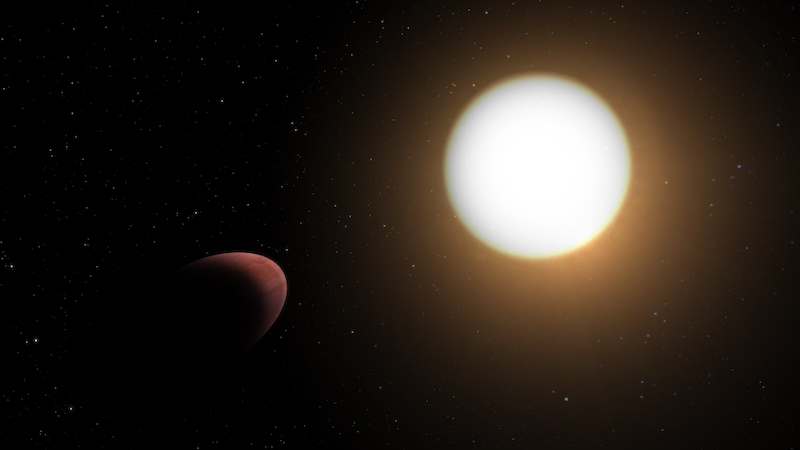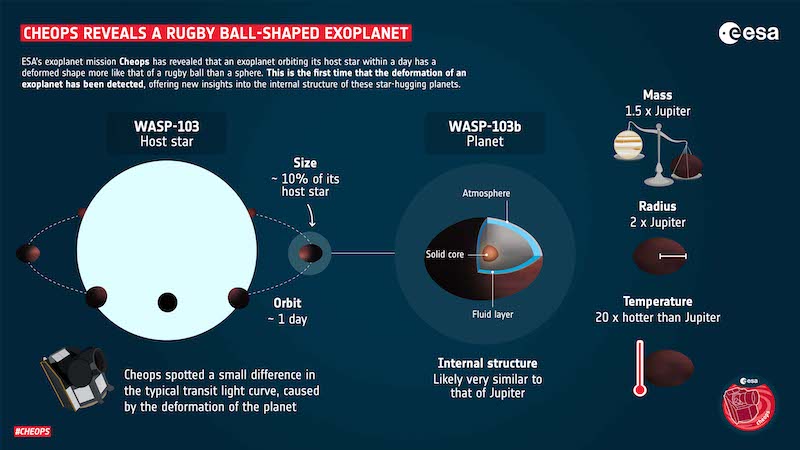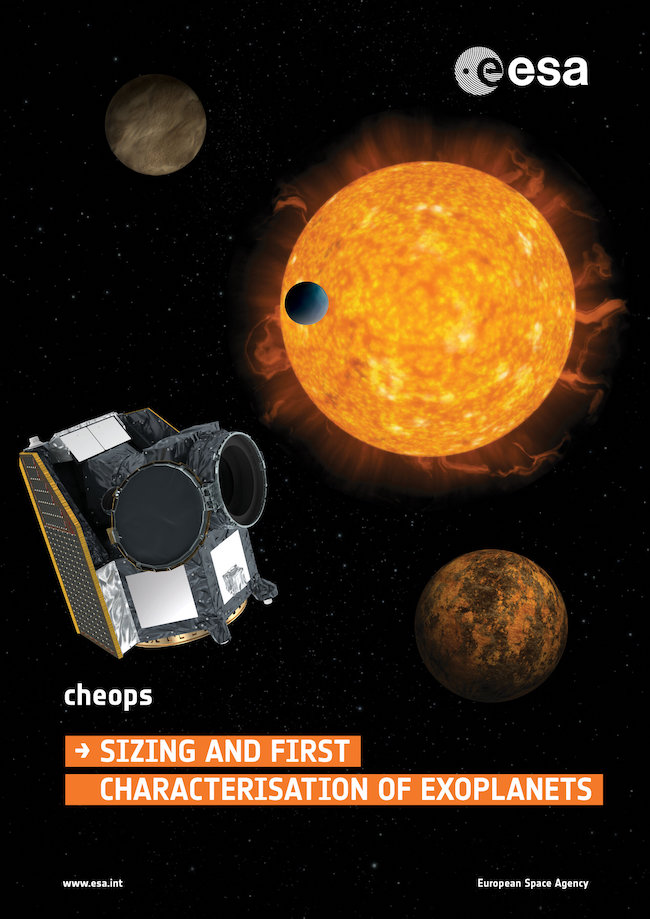
Planets are round, right? While many are squashed slightly at the poles (as Earth is), all the planets in our solar system are basically spheres. The same goes for the many exoplanets found so far. But on January 11, 2022, astronomers announced they’ve found one giant world that defies the norm and looks like a … rugby ball.
An international team of researchers studied the oddly-shaped planet using the CHEOPS space telescope. The astronomers published their peer-reviewed findings in the journal Astronomy & Astrophysics on January 11.
EarthSky 2022 lunar calendars now available! Order now. Going fast!
A rugby ball-shaped exoplanet larger than Jupiter
The planet, WASP-103b, is a giant at almost twice the size of Jupiter. The star it orbits resides in the direction of the constellation Hercules. The planet is also 1 1/2 times the mass of Jupiter and orbits its star about 50 times closer than Earth orbits our sun. It completes an orbit in only one day! This means it is a type of planet called a hot Jupiter. That is, it’s a gas giant planet that orbits close to its star. And, it turns out, it is shaped like a rugby ball. It resides 1,225 light-years from Earth and was first discovered in 2014.
The Hubble Space Telescope and Spitzer Space Telescope also looked at WASP-103b. Now, with the additional observations from CHEOPS, the astronomers were able to measure the tidal deformation of the planet. Tidal forces “tug” on a planet, much as Earth’s moon tugs on our world’s oceans, causing the tides. For WASP-103b, these forces had been suspected, but not confirmed. Coauthor Yann Alibert, in a statement, said:
Because of its great proximity to its star, we had already suspected that very large tides are caused on the planet. But, we had not yet been able to verify this.
These strong tidal forces cause the planet to “stretch out” in the middle, making the planet more oblong than round.

Measuring tidal deformation
The researchers measured the slight but noticeable tidal deformation of the planet. They did this by observing transits of the planet, as it passed in front of its star, as seen from Earth. Co-author Babatunde Akinsanmi, a researcher at the University of Geneva, said:
After observing several such so-called “transits,” we were able to measure the deformation. It’s incredible that we were able to do this; it’s the first time such an analysis has been done.
So the new observations tell scientists the shape of the planet. But they also provide clues about the inside of this world. How is that possible? Basically, the researchers were able to derive a parameter known as the “Love number” from the transit light curves. This parameter was named after British mathematician Augustus Edward Hough Love. It provides information about how mass is distributed inside a planet. Consequently, this can also give hints as to the inner structure of the planet. As Akinsanmi noted:
The resistance of a material to deformation depends on its composition. We can only see the tides on Earth in the oceans. The rocky part doesn’t move that much. Therefore, by measuring how much the planet is deformed, we can determine how much of it is made up of rock, gas or water.

Jupiter-like on the inside
Despite the size difference, the interior of WASP-103b is thought to be similar to Jupiter. Co-author Monika Lendl at the University of Geneva said:
In principle, we would expect a planet with 1.5 times the mass of Jupiter to be about the same size. Therefore, WASP-103b must be highly inflated due to heating by its nearby star, and perhaps other mechanisms.
The results so far provided good idea about the planet’s shape and interior, but further observations are still needed. These will include observations by both CHEOPS and the newly-launched James Webb Space Telescope. Lendl added:
This would improve our understanding of these so-called ‘hot Jupiters’ and allow a better comparison between them and giant planets in the solar system.

Bottom line: An international team of astronomers has found that one giant exoplanet is unlike any seen before. It is about twice the size of Jupiter and its unusual elongated shape makes it look like a rugby ball. It orbits its star 50 times closer than Earth orbits the sun.
Source: Detection of the tidal deformation of WASP-103b at 3 sigma with CHEOPS











